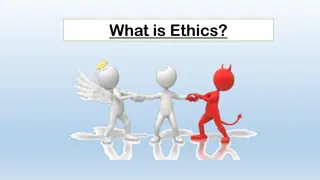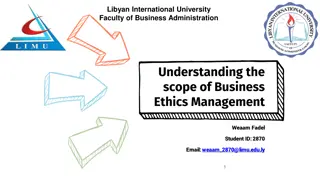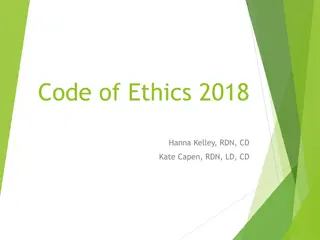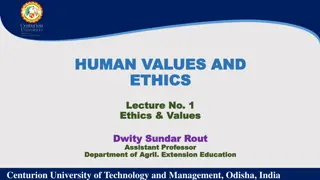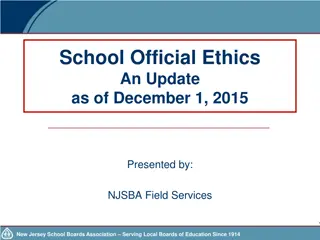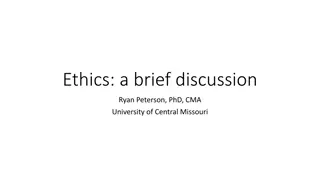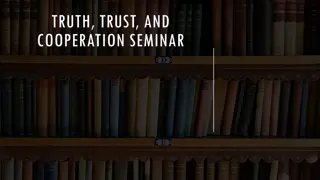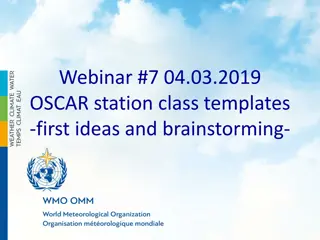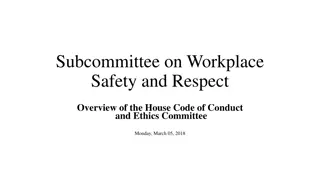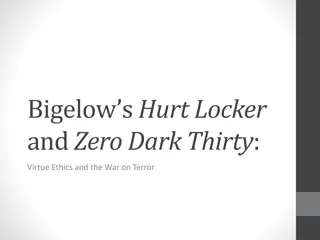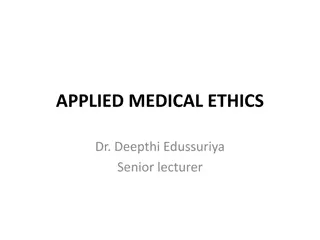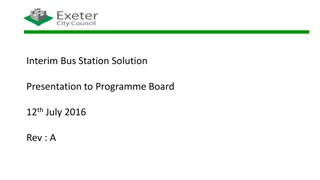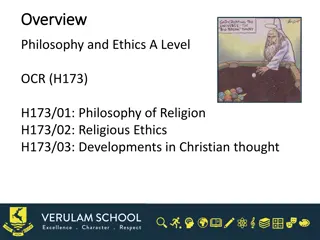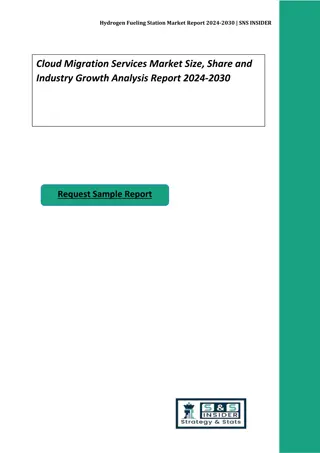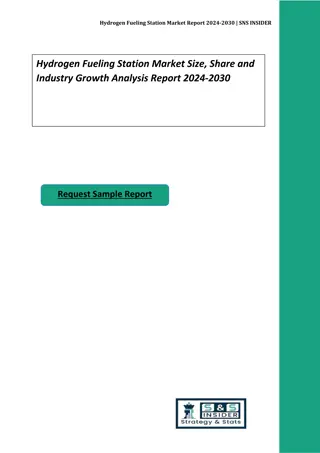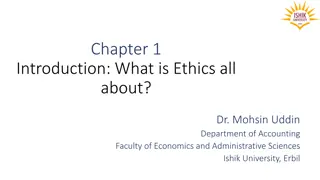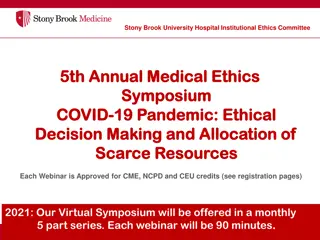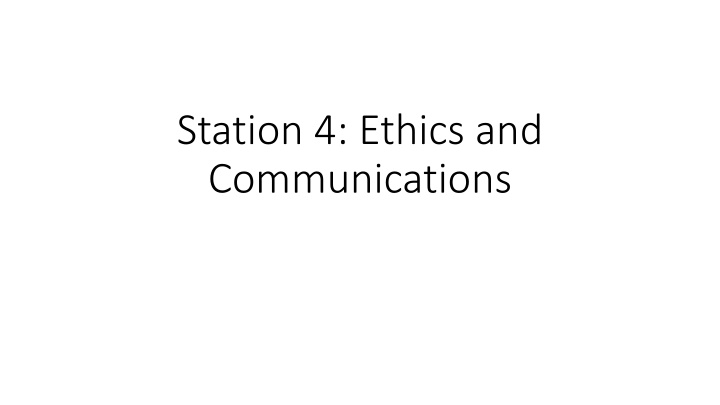
Ethics and Communications in Healthcare: Principles, Challenges, and Practices
Explore the ethical principles, common topics, and communication strategies essential for healthcare professionals. Learn about autonomy, beneficence, confidentiality, negligence, and more. Discover how to handle breaking bad news, consent-taking, capacity assessment, and other critical healthcare scenarios effectively.
Download Presentation

Please find below an Image/Link to download the presentation.
The content on the website is provided AS IS for your information and personal use only. It may not be sold, licensed, or shared on other websites without obtaining consent from the author. If you encounter any issues during the download, it is possible that the publisher has removed the file from their server.
You are allowed to download the files provided on this website for personal or commercial use, subject to the condition that they are used lawfully. All files are the property of their respective owners.
The content on the website is provided AS IS for your information and personal use only. It may not be sold, licensed, or shared on other websites without obtaining consent from the author.
E N D
Presentation Transcript
Station 4: Ethics and Communications
Overview General Matters Ethical Principles Common Topics
General Matters 20 minute station 5 minute preparation time before 14 minute patient encounter 1 minute reflection 5 minute discussion Focus on the task Preparation Familiarise with common topics Prepare and practice stock phrases for difficult situations Structure your discussion around ethical principles
Ethical Principles Autonomy Individuals have a right to self-determination free from coercion or coaxing Principles for making decision for someone who lacks capacity: Every patient has capacity until proven otherwise Unwise decision does not mean lack of capacity Any decision made for patient who lacks capacity must be in best interest Formal assessment of mental capacity can only be done by practitioners who have undergone training and whose names are registered with the Office of Public Guardian Beneficence: Promoting what s best for the patient Confidentiality: Trust between doctor and patient Do no harm/ non-maleficence: Balance risk of harm against benefit Equitable care/ Justice: Resources are limited. Fair allocation of resources Professionalism Truth Telling and Candour: Patients have a right to information about their condition and treatment options available
Ethical Principles Negligence: Duty of care, breach of duty, harm as a result of breach Bolam Test (applicable for diagnosis and treatment): a doctor is not negligent if the act is supported by other respected doctors, as long as those doctors opinion is internally consistent and logical. Montgomery Test (for advice): 3 stages 1) Relevant and material info withheld from patient? 2) Was the doctor in possession of the information? if not in possession, use Bolam s test to determine if doctor was negligent in diagnosis/ investigations 3) Was the doctor justified in withholding the info from patient?
Common Topics 1. Breaking Bad News 2. Retroviral Disease 3. Genetic Counselling 4. Brainstem Death and Organ Donation 5. EOL Matters: DNR, care withdrawal, artificial feeding 6. Medical Error or Complication 7. Communication with Colleague 8. Consent Taking 9. Capacity Assessment 10. Counselling about a Condition/Diagnosis
Breaking Bad News - SPIKES Setting: Greet, confirm patient, request if would like anyone else around Perception: Find out understanding of test, were there specific concerns/ideas/expectations Invite: Warning shots unfortunately I do not have good news one of your tests actually returned abnormal are you alright with me proceeding to tell you about it? Knowledge: Provide information in jargon free fashion. Diagnosis, further tests, treatment, prognosis. Pay attention to patient s reaction, if they appear in shock, pause and identify emotion/difficulty of situation, slow pace and allow patient space and time. Empathy: Empathic statements/responses as appropriate Summary/Strategise/Send off: Summarise what has been discussed, express recognition of difficulties for patient, lay out follow up plans/referrals, enquire if anyone is accompanying patient back Scenarios: Cancer, other serious medical conditions, sudden death of a relative Content For sudden death, must remember to mention coroner s case; but does not = post mortem
Retroviral Disease Scenarios: Consent for testing, breaking diagnosis, concerns about spouse, concerns about work Caution when using SPIKES don t ask if want anyone else around General Tips HIV vs AIDS Treatable Like many chronic diseases Reportable disease MOH will inform partner because of public health concerns Coaxing to tell spouse: 1. Better to hear from patient himself 2. Earlier diagnosis = earlier treatment 3. Offer to help with the conversation
Retroviral Disease HIV and Pregnancy Teratogenic drugs like Efavirenz: So need to use contraception when on that drug Small chance of preterm delivery and IUGR especially with use of protease inhibitors Risks of transmission: 20% if not on medication, 1% if taking 3-drug combination (independent of CD4 count) Non-detectable viral load can still be transmitted to foetus Preventing transmission Must attain a stable and sustainable viral load prior to conception C-section Baby should receive post-exposure prophylaxis x 6 weeks (Zidovudine) Cannot breastfeed after birth Common Questions What if I don t inform my wife? Focus on wife s wellbeing risk to her, treatability Also may have implications on children if she was HIV +, possibility for transmission Explain that HIV is a notifiable disease, contact tracing would be carried out by MOH. Hence would be better for wife to hear from patient himself. Does that mean I cannot have sex anymore? Legal to inform any sexual partner if HIV positive To use barrier protection, but risk remains
Genetic Counselling Find out purpose behind desire for genetic testing Find out about symptoms, family tree Explanation Involvement of other family members most effective and accurate outcomes If mutation known, can test specifically Broad based testing has problems of increase cost, variants of unknown significance (VUS) Limitations False positives/negatives, indeterminate results + test does not equate to definite disease, nor prediction of disease onset/progression Implications To self: Anxiety, insurance To offspring: Likelihood of acquiring disease, preimplantation genetics To family members Take time to decide on whether to proceed with testing Refer to genetics team/geneticist
Genetic Counselling Common Questions Am I obliged to tell my family? No. But as there may be implications, encourage to tell. Content AD: Neuro (MD, FSHD, Huntington s Disease, Spinocerebellar Ataxia), Neurocut (NF1/2, Tuberous Sclerosis), Cancer (VHL, MEN1/2, Peutz Jegher, BRCA, FAP, HNPCC), Others (APKD, Marfan s, HHT, HOCM, Acute Intermittent Porphyria but low penetrance) AR: Neuro (Friedrich s Ataxia, Ataxia Telangiectasia, Wilson s Disease, Haemochromatosis), Others (Cystic fibrosis, Beta Thalassemia) X-Linked: Neuro (DMD, BMD), Others (Haemophilia) Variable: Neuro (Hereditary Spastic Paraparesis, HSMN (AD most common)), Others (Osteogenesis imperfect (AD most common), Retinitis Pigmentosa (AD most common))
Brain Death and Organ Donation A patient with brainstem death is dead Can attempt to transit to topic of organ donation by enquiring about patient s nature - whether he was someone who liked to help others Explain process: Organs will be removed by a competent surgical team, will be closed up in a dignified manner, body returned to the family Content HOTA: Cornea/Heart/Liver/Kidneys, opt out scheme applying to all Singaporeans 21yo and above MTERA: Opt in system to pledge any organ for treatment, education, research by anyone at 18yo and above or family members of deceased Brainstem death: Certified by 2 doctors not involved in care of patient nor in the transplant proceedings
EOL Matters Care decisions ultimately based upon collective assessment of medical status, functional status, patient s wishes, family s wishes Explain about patient s condition possible impending demise, irreversibility of condition Focus on goals of care (tying in with patient s expressed/surrogate wishes with patient s current medical status and anticipated disease trajectory) Link specific interventions to these goals (whether they are in keeping or not) Explain that the focus of the discussion is not about withdrawing treatment, but instead effecting the appropriate treatment that would serve the patient s best interest in this juncture Reiterate that you will be walking alongside this journey with the patient and the family
EOL Matters Specific Questions Feeding/IV fluids: Patients in this state often do not perceive thirst or hunger, just like how when you re having a very bad flu, you generally won t have the desire to eat, likewise the patient is going to feel the same Starve to death?: Loss of appetite is part of the underlying disease trajectory. While the lack of nutrition does contribute to the process of death, it is unlikely that the will experience hunger. We will be monitoring closely for symptoms and signs of hunger, and comfort feeding can always be initiated. Conflict wrt DNR: Your views are definitely valued and heard. However, as the doctor looking after your dad, I would be unable to provide treatment that I feel would bring more harm than good to him. I am happy to arrange for a second opinion consult to get a different perspective on this matter. Is that alright with you?
EOL Matters - Systems ACP: Voluntary discussion to find out patient s EOL/care references, documented to act as a guide if patient becomes incapacitated, non legally binding AMD: Legally binding document against artificial life support in context of terminal illness (certified by 3 docotrs); made at least 21yo, 2 witnesses (one medical practictioner); medical team will need to check with registrar of advance medical directives if patient is terminally ill and incapacitated to decide LPA: Empowerment to a donee to make decisions on behalf when the individual has lost capacity
Medical Error/Complication Ascertain fault Apologise appropriately if there is fault, apology should be rendered. If not, one can express feeling sorry for the situation Allow patient/relative to vent/rant Identify and empathise and validate the reasons for anger, apologise once again for its occurrence, and attempt to steer conversation to the subsequent management of the patient Caution: Being defensive, blame your colleague
Medical Error/Complication Mitigating measures: Thorough investigation, rectifying measures to patient s condition, systematic improvements Specific Questions Demanding name/details of a colleague: I am sorry that it is not in my capacity to divulge this piece of information. I recognize that a serious mistake has taken place, and as the medical team looking after your mum, we collectively take responsibility for what has happened. A thorough investigation will be carried out to get to the bottom of what happened. We will put you in touch with our patient relations officers who will follow up with you on this matter.
Communication with Colleague Often about misconduct, poor performance etc Find out colleague s perception and understanding of his issues Show concern, find out if there are any difficulties faced by the colleague Reflect issues objectively and find out how colleague feels about it Strategise to help colleague Caution: Judgmental, minimizing misbehaviour
Consent Taking Explain procedure/treatment Explain indication (and implications of not proceeding with treatment) Explain alternatives Explain risks
Capacity Assessment Principles Every patient has capacity until proven otherwise Unwise decision does not mean lack of capacity Any decision made for patient who lacks capacity must be in best interest Formal assessment of mental capacity can only be done by practitioners who have undergone training and whose names are registered with the Office of Public Guardian Steps Comprehend Retain Process and weigh up Communicate decision
Explaining Diagnosis or Condition Find out understanding and concerns first! Explain disease/diagnosis Explain treatment: Non-pharm, pharm, surgery Explain monitoring, complications, symptoms to pay attention to If relevant, offspring/work/insurance/driving impact Provide information about support groups, other relevant resources
Driving Disorder Angina Group 1 (Class 1, 2, 3 licenses) Not fit until angina controlled Group 2 (Class 3, 4 & vocational licenses) Not fit until symptom-free, must also complete exercise stress test Not fit for at least 2 months. After must be symptom- free, must also complete exercise stress test ACS/CABG Not fit for 1 month Angioplasty Not fit for 1 week Not fit for at least 2 weeks. If stented at least 2 months. Thereafter as above. Not fit if arrhythmia caused LOC in past 2 years. If not will need to establish no structural cardiac abnormality, must also complete exercise stress test Unfit. Fit only after repair Generally unfit Seizure free 1 year while off AEDs. No cerebral abnormality, EEG normal. Seizure free for 10 years and off all AEDs. No cerebral abnormality, EEG normal Arrhythmia Not fit if arrhythmia liable to cause LOC. Resume only after satisfactory control. Aortic Aneurysm Pacemaker Insertion Provoked Single Seizure Fit if BP controlled Fit Seizure free 1 year while off AEDs. No cerebral abnormality, EEG normal. Seizure free for 3 years and off all AEDs at least 1 year. No cerebral abnormality, EEG normal Unprovoked/Epilepsy Stroke No deficits Not fit for 1 month If mild deficits, need to go through Driving Assessment and Rehab Programme (DARP) after 1 month Not fit for 1 year Must have fully recovered, and go through DARP TIA Single: Fit if TIA free for 1 month Multiple: Fit if TIA free for 6 months Single: Fit if TIA free for 6 months Multiple: Fit if TIA free for 1 year Bleeds/Aneurysms Unexplained LOC Case by case by neurosurgeon Fit if LOC free for 1 year Case by case by neurosurgeon Fit if LOC free for 1 year



